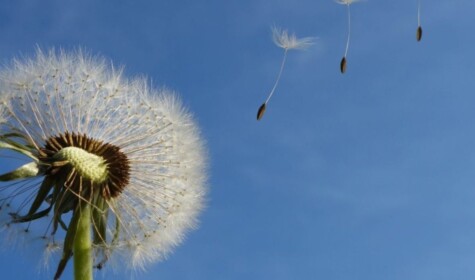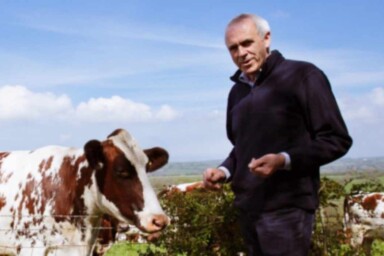The reality is that issues of sustainability are chronically underrepresented in teaching and learning, as a study of education policy and curricula across the 46 UNESCO Member States, published by UNESCO this year, shows only too clearly. Almost half (45%) of the education policies and national curricula reviewed make little to no reference to environmental themes, more than half make no mention of climate change and a staggering 81% omit biodiversity entirely.
It is clear that urgent change is needed in education if we are to learn to live in healthier, more sustainable ways. And I know, based on 18 years experience of weaving issues of sustainability into teaching and learning, that making the changes we so desperately need in education – and which our young people are so forcefully demanding – is perfectly possible.
I was fortunate enough to speak recently at the UNESCO World Conference on Education for Sustainable Development (ESD) and I will share here what I shared with the delegates there about how we, as educators, go about embedding ESD into learning. We have a saying in the UK that a traditional approach to education is based on three fundamentals – the three ‘Rs’: reading, writing and ‘rithmetic. I would say that an approach to education that is underpinned by issues of sustainability is based on three ‘Ps’ and I’d like to focus on each of them in turn.
What role do principles play in ESD?
The first P is for PRINCIPLES. The natural world is the most sustainable system of all. Its principles and laws teach us a way of working that enables any system to be in harmony. And when any system is in harmony, sustainability is an emergent property. So, Nature’s principles of Harmony are the starting point for how to live sustainably. We focus a lot in education on learning aboutNature and we know how important it is to learn in Nature. But I wonder how much we are asking what we can learn from Nature.
So, what are these principles of Harmony at work in Nature that can create a blueprint for a whole-school approach to education for sustainable development?
They include the principle of Interdependence and an understanding that everything is connected.
They include the principle of the Cycle and an appreciation that natural systems are cyclical. In contrast, many of our practices are linear and they create waste and pollution.
They include the principle of Diversity and the importance of diversity and biodiversity to the health and resilience of any system or organisation.
And they include the principle of Adaptation. The natural world is constantly adapting and changing, and this adaptation teaches us that change is not just a good thing, but an essential part of our evolution.
When these principles of Harmony underpin learning, our children and young people begin to see the world differently. They start to understand that we are Nature, we are not separate from the natural world. And when we understand our place in the world in this way, when we feel that we are connected to Nature, we are more compelled to protect it and to change our damaging behaviours. Putting this understanding at the heart of all learning is essential if we are to make education for sustainable development a reality.
How do projects feature in ESD?
The second P is for PROJECTS. Too much of what is taught in our schools takes place in subject-specific silos. It is an approach that promotes separateness and which results in fragmentation; not just fragmentation of the curriculum, but also fragmentation of students’ experience of learning and – beyond this – their view of the world. How much better would it be if learning were framed around projects or enquiries that draw on skills and content from across the curriculum to take us on a journey of learning? From my own observation, when education is structured in a more holistic, joined-up way, the learning makes more sense to the student.
As an example, when I was a headteacher, our Year 1 classes of 5 and 6 year olds explored the question: ‘Which is my favourite wildflower and why?’ Through the learning that blossomed from this question, they considered why the Harmony principle of the Cycle was so important in the lifecycle of a plant – something they went on to revisit year on year in other contexts, such as the water cycle or the cycles of the solar system. The half-termly learning of all the children at the school culminated with a celebration we called a ‘Great Work’. In the case of our Year 1 learners, the children sowed wildflower seeds that the previous cohort of children had harvested the year before to create a wildflower meadow in the grounds of the school. This act of sowing seeds that other children had collected was in itself a cyclical act.
This way of learning has a strong sense of purpose. It is planned back to front with the enquiry question and the principle of Harmony driving the learning and the subjects feeding in. It needs some creative thinking to rework an otherwise fragmented curriculum, but it doesn’t take long. Over time, half-term by half-term, and with sustainability themes drawn out, children develop a real appreciation of what sustainability means in the context of their lives. When, over the course of seven years in a primary school and beyond into secondary, children are able to explore their learning through relevant, meaningful projects with subject content and sustainable development goals integrated into them, just think how different their learning and worldview might be.
How can we put ESD into practice?
The final P is for PRACTICES. One of my concerns about sustainability is that it can often be too much in the head, too intellectualised. What is key for our children’s developing understanding of education for sustainable development, is that they experience it through practical activity.
If we want to learn about food, let’s find ways to grow food in school or with others in our community. If we want to address the big issue of climate change, let’s start by monitoring our energy use in school and work out ways to reduce it. We can do the same with water and food waste. If we want to improve biodiversity, let’s plant and grow in ways that bring biodiversity back! It is through practical application that education for sustainable development is brought to life.
How can this approach to ESD be developed in different settings?
This approach to education for sustainable development started in one school but is now developing in schools across the UK and around the world, with support from The Harmony Project.
It’s clear that if we are to put education for sustainable development at the heart of learning across the whole school, we have to see it as a golden thread that weaves through everything. I believe that Nature’s principles of Harmony explored through meaningful projects of learning and applied through practices that address issues of sustainability is the best way for our children to learn. Our challenge is how quickly we can engage all schools in this approach.
To find out more about how you can develop an approach to ESD that is based on Nature’s principles of Harmony, visit The Harmony Project’s website.







